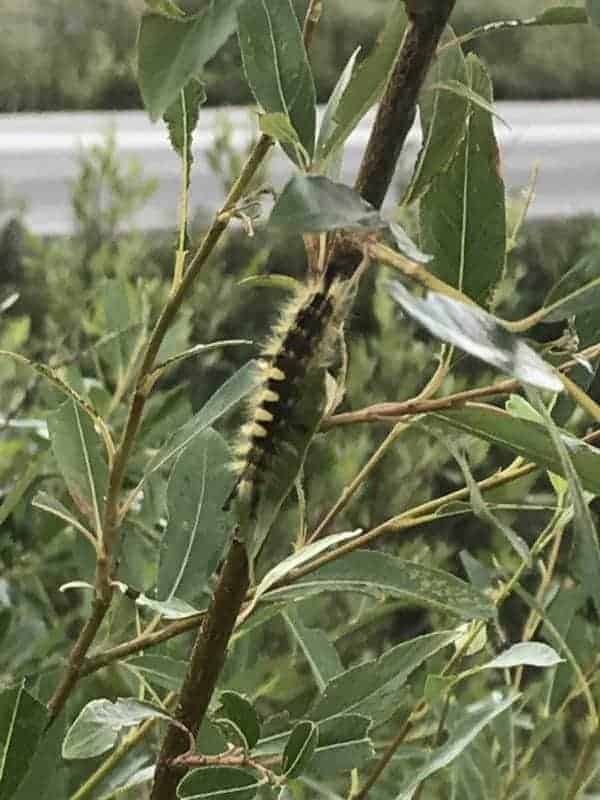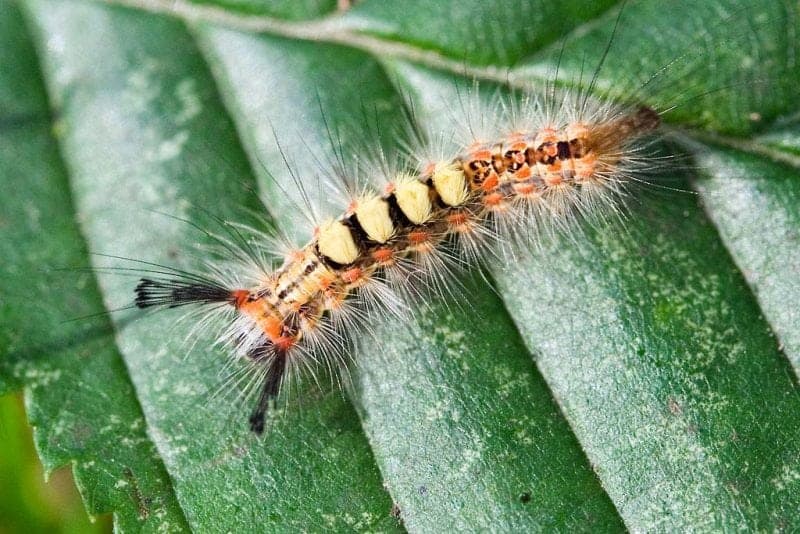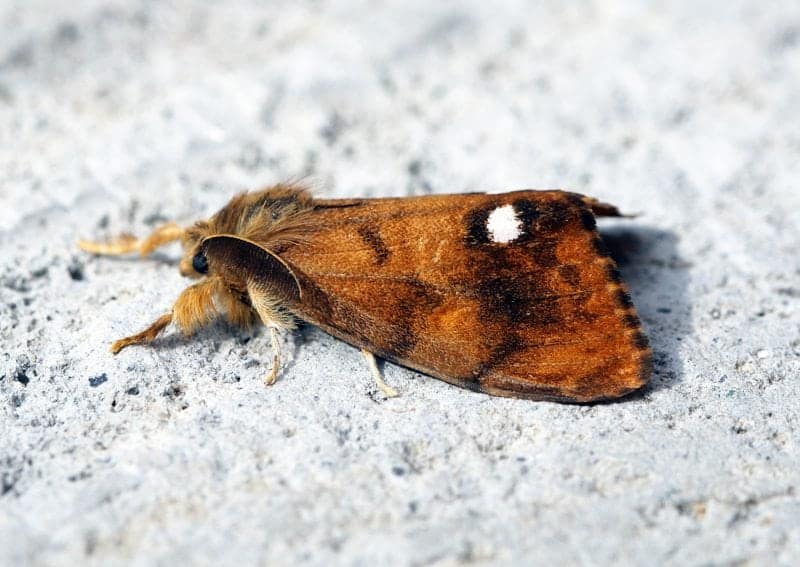When Peggy Jay went berry picking last weekend, she was surprised to find the akpik and blueberry patches covered in caterpillars.
"I went out checking my secret berry patches, which are within Inuvik, and I found that the berries are there, but some of them had caterpillars right over the berries and the leaves!" said Jay. "You don't want reach your hand out to pick without looking down first … it was not a very pleasant experience."

Photo courtesy of Peggy Jay
Jay said she has never noticed the caterpillars before this summer, and has also noticed them on birch trees and in willows.
She said they've also been making themselves comfortable in the greenhouse she has set up in her yard.
"They've been eating my rhubarb leaves … they've left holes all over the leaves," she said. "[My greenhouse] is built underneath birch and willow trees, and they seem to want to climb in and get into the high parts of the greenhouse to build their cocoons."
Jay said she has seen many of the caterpillars around town, and some less fortunate ones smushed by cars on the road.

Photo courtesy of Creative Commons
Tom Lakusta, manager of forest resources for the Department of Environment of Natural Resources (ENR), said there is an outbreak of two types of caterpillars in Inuvik this summer – the northern tent caterpillar and the rusty tussock moth caterpillar.
"There are more rusty tussock moths in Inuvik right now. It's got two antennae that look like baseball bats and little tufts of fur on its back, with little orange spots on its side," said Lakusta. "It will eat willow and alder and other shrubs, but they shouldn't be handled because the tufts of hair have small amounts of venom that can cause a rash."
Lakusta said the outbreak will last two to three years, but he isn't sure if following years will be better or worse than this year's because the insects haven't really been in Inuvik in the past.

Photo courtesy of Creative Commons
The vegetation that the caterpillars are snacking on is really tough, according to Lakusta, and will put out new leaves next year, if not this year.
He said a change in climate could be contributing to the outbreak, but researchers don't know for sure.
The best way to get rid of the insects is to burn their yellow eggs if you see them on twigs or plants, and residents can report any notable incidents to ENR.
According to Christian MacQuarrie, a research entomologist with the Canadian Forest Service in Sault Ste. Marie, Ont., tent caterpillar outbreaks happen all over Canada.
"Every once in a while, the population just erupts, and that's when everyone starts to notice them. Outbreaks happen in Canada every year, and this year in Inuvik, you're in an outbreak," said MacQuarrie. "They're part of the ecosystem, they're supposed to be there. They eat the vegetation, but the trees recover, and in a few years they'll be gone."
MacQuarrie said the caterpillars can make a fun, short-term pet for children.
"They're easy to catch, and you can keep them in a jar with a few leaves for food and they will become cocoon," he said. "You can keep the jar on your kitchen counter and watch them go through their phases and release them once they become moths. They make a fun pet for a few weeks!"